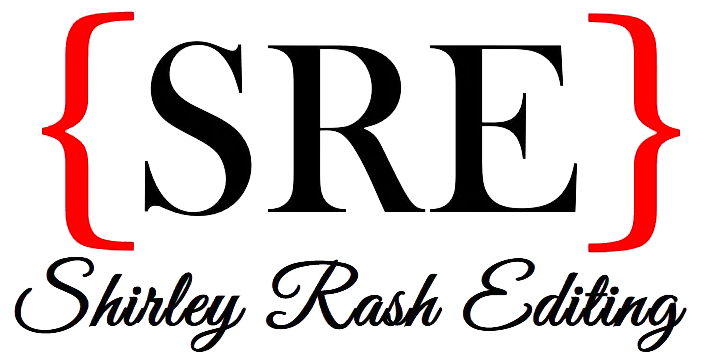I wanted to conclude my series on using POV effectively by looking at one of my favorite genres–epistolary fiction.
Epistolary fiction is a story told via letters or other documents. Over the years, authors can and have used everything from diaries to text messages to emails for this genre.
My introduction to epistolary fiction was probably the horror classic Dracula. The story is told through a series of diary entries, letters, newspaper entries, and other documents (including a shipping log). When I was in grad school, I took a class on Gothic novels and their adaptations and ended up spending a few months researching Dracula spinoff/sequel books and how they attempted to establish credibility with readers.
Many of them employed the epistolary format in whole or in part, both as a tribute to the original and to establish their own fidelity to it , though they varied considerably in approach. Some stuck with the more traditional letters and diaries, while others broadened it to include telegrams and tape transcriptions. I was particularly intrigued with the idea of authors using the genre to signal credibility while also doing their own thing with it.
Why use epistolary elements for your novel?
My short answer to this is because it can be fun! It’s probably my inner history major at work here, but I love combing through the documents in an epistolary novel and piecing together the evidence.
This approach can also help with lending a sense of realism and authenticity to the story. That’s a primary function of the epistolary elements in Dracula. It’s no coincidence that the bulk of the letters and diaries stem from respectable middle-class professionals and that they include documents like shipping logs and newspaper articles to corroborate the tale the characters are telling. Stoker knows that audience buy-in on the idea that a vampire is terrorizing England is crucial to the story being effective, and the epistolary elements of the story function as a way to make it seem more real to readers.
The genre also lends itself well to any story with a mystery element, especially if the novel is nothing but letters, diaries, etc. Often it’s up to the reader to connect the dots and piece the story together, and epistolary element can help engage a reader and make it fun for them to uncover the clues as the manuscript progresses.
Epistolary fiction can also let you convey your characters’ thoughts in a way that you may not be able to do so with more traditional narrative. This was one of the elements of Cindy McIntyre’s Love at the Center of Grief that particularly appealed to me. I worked on Cindy’s book as a developmental editor and copyeditor a couple of years ago and am currently working on the sequel. The books center around a teen romance between Gretchen and Hayden, who met at the local grief center after losing their moms as young children. The books are mostly composed of their grief diaries, and I love how that venue allows both characters to verbalize thoughts and feelings that they may not feel comfortable expressing to someone face to face.
The fact it’s an assignment is also a great way to explain why these very modern teens are keeping a journal, but I particularly like how their approach to the assignment reveals their personalities and individual voices. Gretchen takes to the journaling quite readily, and her entries are expansive, reflective, and thoughtful while also masking some very painful secrets. They’re very appropriate for a perceptive, intelligent young woman who is curious about the world and her place in it. Hayden initially resents the assignment much more, and his entries–especially in the beginning–are far more clipped and bitter. There’s a real bite to them in comparison. He’s dealing with a lot of anger, and the way he writes shows us that very effectively. The impact of Hayden’s first chapter after Gretchen’s first chapter is the reading version of a punch, and I love that!
What are some pitfalls to watch out for with epistolary fiction?
I think the biggest issue I see with this genre is often people will select it and then fight against the limitations of it. As much as I love Dracula and how it uses epistolary fiction, Stoker himself falls into this trap. I always find it inadvertandly hilarious when Jonathan Harker writes that he’s concerned about being discovered by Dracula after he’s started to realize something is very wrong in this Transylvanian castle, but then still churns out pages of highly detailed recaps of his experience. Maybe save it for after your escape, pal! Granted, he’s using shorthand in the story but still. It sort of defies belief that he’d sit there and write so extensively rather than saving his own neck. As an editor, I am all for writers writing, but in this situation, you definitely want to run then write.
I had a similar reaction to The Martian. I loved the premise–epistolary fiction in space!–but it was hard for me to suspend belief that Mark Watney was going to pause during life-or-death moments to compose lengthy and witty sentiments.
A similar challenge can be balancing how much information to give in general, even when the characters aren’t battling vampires or Mars. When using epistolary fiction, it can be tempting to want to treat it as straightforward narrative and explain everything to ensure the reader doesn’t miss the intended information, but the result can lead to protracted information dumps where the characters are clearly stating something for the benefit of the reader. Rather than helping the reader out, it can instead lead to jarring the reader out of the moment.
For both of these issues, I’d recommend not fighting against the limitations of the genre and instead embracing them. What makes epistolary fiction fun is the fact that it is different from a regular narrative, and it works much better when you resist the temptation to treat it as one.
Epistolary fiction also, somewhat contradictorily for a technique often seen as promoting authenticity and realism, requires writers to frame a story out of a genre that in real life may not have such a clear-cut narrative arc. If you read real diaries and or a series of real letters, you will often not find satisfying plot arcs. That’s just the nature of life. I recently read the published diary of the actor Alan Rickman, and though there are some distinguishable plotlines throughout, there are also a lot of stories that are introduced that have no bearing on anything else. There are often things that are mentioned as significant and never followed up on, and the editor ends up noting significant things in his life that he never records. So, one of the challenges for a writer of epistolary fiction is definitely giving it an authentic feel while also providing character or plot arcs that are more common in fiction than real life.
Another issue for this genre is having multiple writers for the documents, but their voices being too alike. It’s a similar problem that can happen with any multi-POV story, but it can be especially noticeable in epistolary fiction when you have characters writing. That was one reason that I was so impressed with Cindy’s series–I love that Gretchen and Hayden have very distinct voices that we see over and over again in their respective chapters.
Now that I’ve wrapped up my series on POV, I’d like to shift my focus to talk about other questions and issues I field as an editor on a regular basis. Are there any topics you’d like to see me address?
What’s Your Story series:





